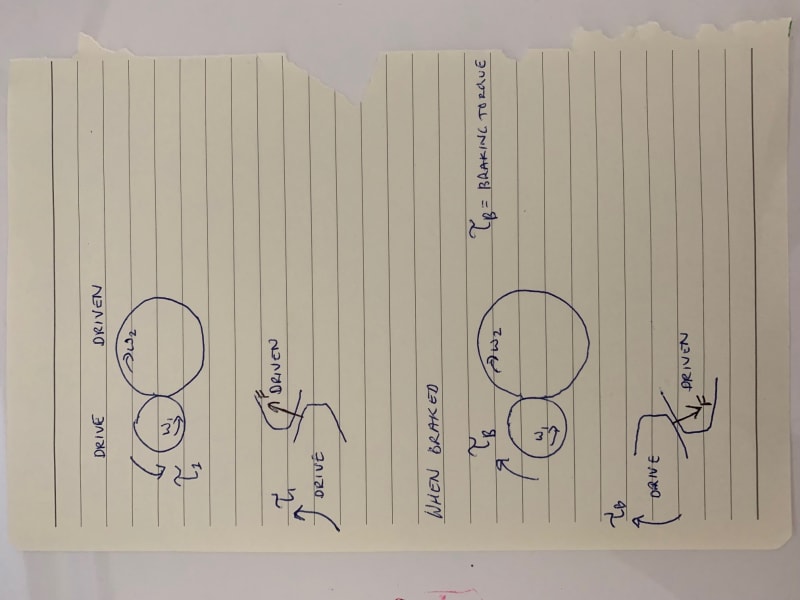NJAus1
Mining
- Mar 19, 2019
- 23
Hi All,
I am just trying to get my head around braking/slowing down a gear set
Simple gear set that has a drive gear and driven gear. If I brake the drive gear by applying a negative torque then this torque (and force) is applied at the pitch line of the gear teeth at the opposite face and in the opposite direction? Picture Below

I am just trying to get my head around braking/slowing down a gear set
Simple gear set that has a drive gear and driven gear. If I brake the drive gear by applying a negative torque then this torque (and force) is applied at the pitch line of the gear teeth at the opposite face and in the opposite direction? Picture Below

